Benefits of Red Infrared Light Therapy Devices
Posted by GEGARY

Light is essential for the development and health of every living species on this planet. In humans, natural light is necessary for vitamin D production and balancing the circadian rhythm.
Unfortunately, in this day and age, our bodies are severely under-illuminated. We spend so much time indoors under harsh artificial light looking at bright screens, but not enough time outdoors exposed to the natural light spectrum.
No wonder our circadian rhythm, sleep and energy levels are completely out of whack!
Luckily, there is a way to get more of the good light waves without drastically changing your lifestyle or even leaving the house. And it's been used by scientists and astronauts at NASA!
If you're looking for something that can supercharge your health, keep reading to learn about red and infrared light therapy.
Red and Infrared Light Waves
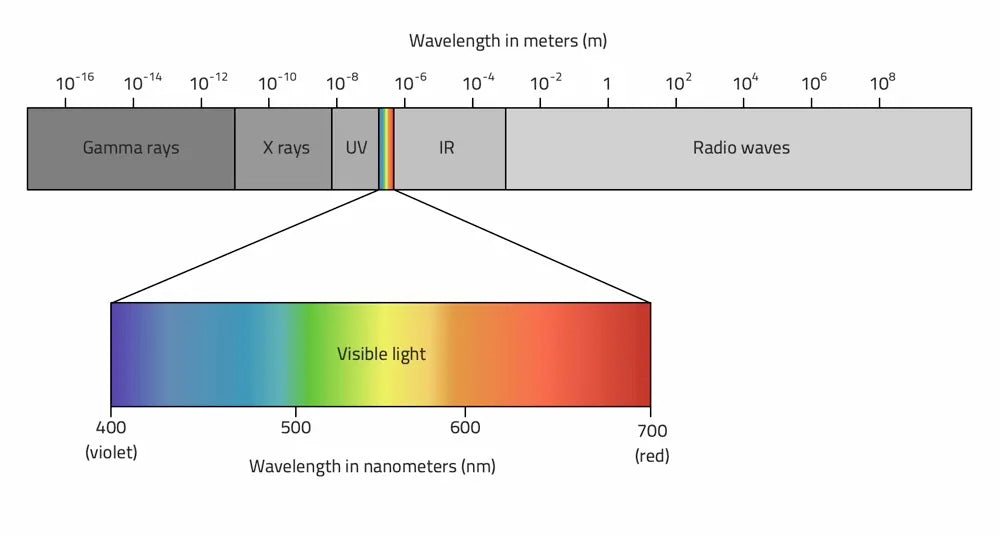
Most of the light waves on the spectrum -- measured in nanometres (nm) -- are invisible to us, bar a VERY small visible light spectrum that ranges from 390 – 750nm.
Within this visible spectrum, low-energy red light waves fall between 625 – 750nm. Beyond the visible light spectrum, on the red light side, we find infrared light. We can't see it but we feel it as heat. Infrared light consists of near, mid and far-infrared waves that measure between 750nm – 1mm. However, near-infrared (750 – 1200nm) is closest to the red spectrum and has the most health benefits.
When it comes to red light therapy, the consensus seems to be that the effective "therapeutic window" for light lies within wavelengths of 630-680nm and 800-880nm.
What is Red Light Therapy and How Does it Work?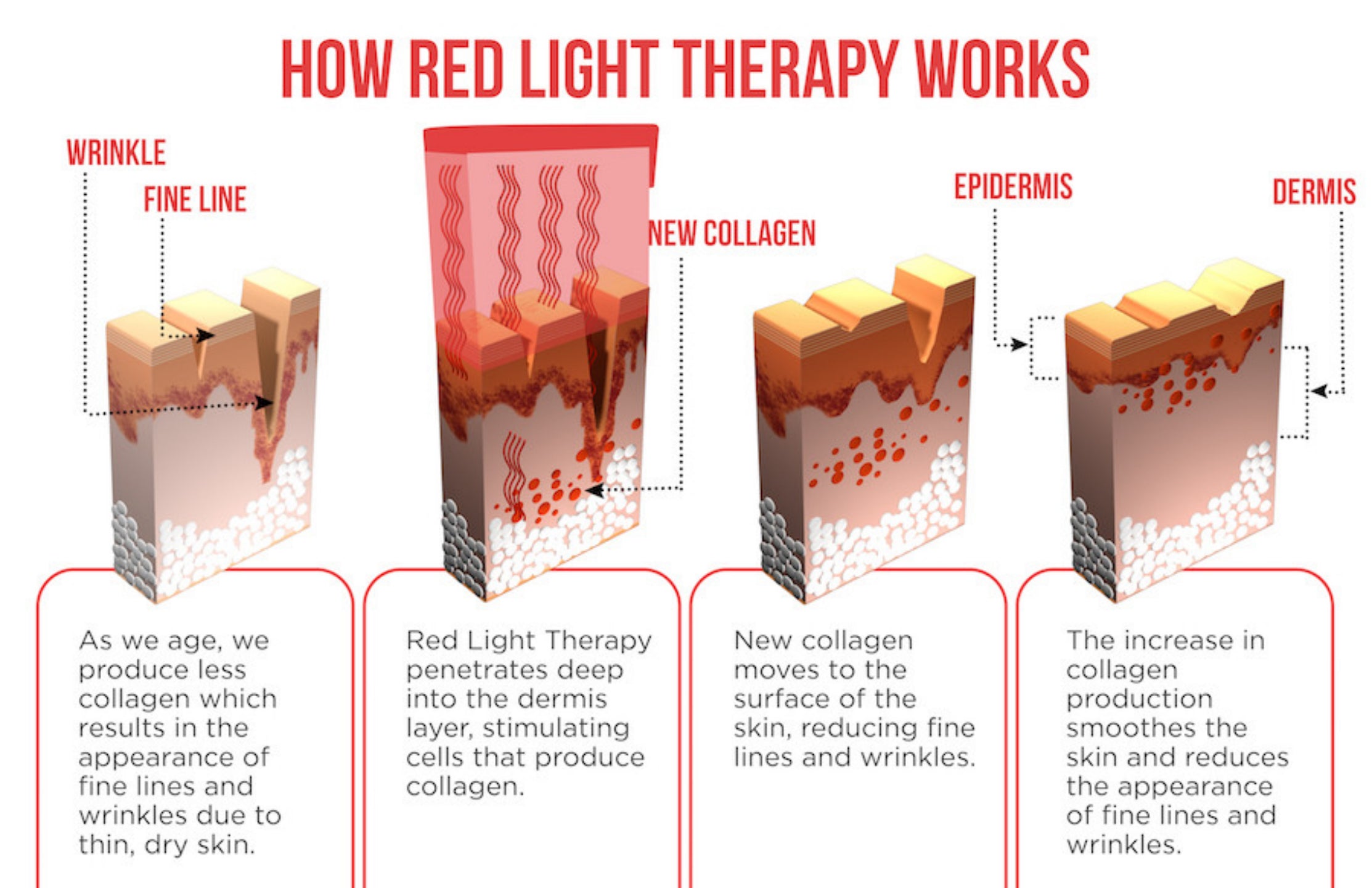
Red light therapy -- also known as photobiomodulation (PBM) or low-level light therapy (LLLT) -- is a completely natural and non-invasive treatment that heals the body on a cellular level.
It delivers low-energy red and near-infrared (NIR) light waves to the body through efficient LED bulbs. Red and NIR light have the same biological benefits and work synergistically, penetrating up to 5 - 10cm below the surface of the skin. Red light waves penetrate the superficial layers of the skin, and the longer wavelength NIR light targets deeper tissues like nerves, muscles, tendons and bone.
In other words, when your cells are treated with red light wavelengths, a multitude of reparative effects can occur, leading to potential benefits like increased collagen production (aka younger-looking skin), enhanced skin tone, and a reduction in inflammation and redness.
So, how does it work?
Red light boosts energy production in human cells by stimulating photoreceptor proteins called cytochrome C oxidase (1). This encourages the mitochondria -- the energy powerhouse of the cell -- to break down nitric oxide and efficiently generate more of the energy molecules adenosine triphosphate (ATP). ATP is the energy currency of the cell and optimal ATP production supports health and repair by enabling the cells to perform efficiently and allowing the body to heal.
Additionally, red light therapy creates something called hormesis -- low-dose stress in the cell. This kind of short-term stress -- much like exercise -- is good for the body as it boosts protein synthesis and enzyme activation. It strengthens the anti-inflammatory and antioxidant defences in the body and improves the overall health and resilience of cells.
Red light waves also increase blood flow, thus improving nutrient and oxygen delivery to cells throughout the body.
What is Red Light Therapy Used to Treat?
Though referred to as a buzzy new trend, red light therapy has been around since the 1960s after NASA originally developed it to help astronauts with tissue healing and repair. In recent years, studies have shown that red light therapy can provide numerous head-to-toe benefits, one of the most popular of which is its ability to treat various skin conditions, including aging.
“As we age, our body’s natural ability to produce collagen—the protein in skin that gives it its thickness, firmness, and resilience—slows down, increasing the likelihood of fine lines, wrinkles, and laxity,” explains Dr. Gross. “The only way to replenish these depleted collagen levels is to stimulate the skin’s own ability to make more of it, which is what red light therapy does. It triggers the cells deep within the dermis to increase their metabolic activity, leading to an increase in collagen and elastin production.” The result is smoother, plumper, more youthful-looking skin.
Aging isn’t the only skin concern red light therapy targets either. According to Dr. Jennifer Chwalek, a board-certified dermatologist at Union Square Laser Dermatology, red light therapy “is commonly used in-office after laser and microneedling treatments to help calm redness and inflammation in the skin and to speed up the [body’s] natural healing process. It has also been studied for its effects in stimulating hair growth, accelerating wound healing, treating acne, and reducing pigment production (aka dark spots).” An astonishing number of studies -- more than 3000 to be specific -- have established a multitude of health benefits due to red and infrared light.
Let's explore some of the most impressive benefits.
Pain and Inflammation
Red light therapy has the ability to penetrate the body and naturally reduce inflammation and pain in skin, muscles and other tissues. It increases blood flow, encourages antioxidant activity and lowers inflammatory markers in the body.
Studies have confirmed that red light therapy can improve a variety of chronic pain symptoms and conditions, such as joint pain, back pain, neck pain and fibromyalgia. A 2010 review study found that red light therapy effectively treats painful tendon injuries and inflammation.
Considering that pain is one of the most common reasons for missing work and visiting the doctor, red light therapy is a natural treatment worth pursuing.
Skin Health and Appearance
Another popular use for red light therapy -- and an area that it excels in -- is improving the health and appearance of the skin.
It boosts blood flow, bringing oxygen and nutrients to the skin cells to encourage healing and reduce inflammation. It also increases the production of collagen by stimulating collagen-producing cells called fibroblasts. Collagen is the most abundant protein in our body. It's found predominantly in connective tissue and acts as the "glue" that holds everything together and gives the skin strength and elasticity.
Unfortunately, poor nutrition and lifestyle and aging all decrease our production of collagen, and the appearance of our skin suffers. By encouraging collagen production, red light therapy firms up skin, reduces fine lines, wrinkles and sagging and generally improves your appearance.
A 2014 study found that volunteers who had two weekly sessions of red light therapy saw significant improvements in their complexion compared to a control group. Excitingly, it also reduced signs of aging.
Research has also confirmed that red and NIR light therapy can improve the skin by healing and reducing:
Acne
Sebum production
Scars
Skin inflammation
Burns
Sun damage
Skin discolouration
Eczema and Psoriasis
Common skin conditions like eczema and psoriasis are notoriously hard to treat and cause huge stress to sufferers.
Red light therapy can heal these embarrassing conditions by reducing skin inflammation and speeding up wound healing. It's fast becoming the treatment of choice due to its effectiveness and safety.
A 2010 study on treatment-resistant psoriasis sufferers found that two 20-minute red light therapy sessions resulted in a 60 - 100% reduction in psoriasis.
Wound Healing
If you've had surgery or have a cut or wound that is slow to heal, red light therapy can help.
It speeds up wound healing by boosting circulation and allowing more oxygen and healing nutrients to reach the area. It reduces tissue inflammation, encourages the formation of new blood vessels and tissues and improves collagen levels.
A 2014 study on patients recovering from heart surgery found that red light therapy reduced pain and bleeding and increased wound healing.
Diabetic Neuropathy
Diabetic neuropathy is a distressing complication whereby high blood sugar causes nerve damage. People commonly experience symptoms of pain and numbness in their legs and feet as well as poor circulation.
Red light therapy provides relief and improves quality of life by boosting circulation and reducing pain and cell damage. It was shown to significantly reduce symptoms when applied to the feet of sufferers for fifteen minutes three times per week.
Exercise Performance and Recovery
Red light therapy is extremely helpful for those looking to improve their muscle gains, physical performance and recovery.
Our muscles are loaded with mitochondria, so red light therapy before a workout stimulates ATP production and increases muscle energy, performance and time to exhaustion. It can also warm up joints and muscles to reduce the chance of injury.
When used after physical activity, it improves blood circulation and oxygenation in muscle tissue to prevent delayed onset muscle soreness (DOMS) and speed up muscle repair and growth.
Research also suggests red light therapy can:
Improve muscle strength
Reduce muscle fatigue
Reduce muscle damage
Lower lactic acid production
Arthritis and Joint Health
By reducing inflammation, boosting collagen synthesis and regenerating cartilage, red light therapy can lower joint pain and swelling and reduce joint degeneration. Research shows us that it's amazing for treating symptoms of degenerative osteoarthritis and inflammatory rheumatoid arthritis.
In addition to reducing joint pain and swelling, red light therapy also decreases stiffness, increases range of motion and improves quality of life.
Bone Healing
Red light waves penetrate deep below the skin, reaching bone tissue and improving cellular energy production, circulation, blood vessel formation and collagen synthesis to speed up bone repair.
This exciting approach to healing bones is promising for people at high risk of fractures -- like those with osteoporosis.
Hair Growth
No need for hair transplants and weird shampoos -- red light therapy is a safe, natural and effective way to encourage hair growth in men and women (21). By increasing the circulation in the scalp and stimulating the hair follicles, it can eliminate the embarrassment and low self-confidence that comes along with thinning hair!
A 2014 study on women with alopecia found that using red light therapy every other day for 25 minutes resulted in a 37% increase in hair growth compared to the placebo group.
Headaches and Migraines
The anti-inflammatory, pain-relieving and circulation-boosting effects of red light therapy make it great for reducing the frequency and severity of headaches and migraines.
Thyroid Function
Red light therapy may be a natural treatment for those with hypothyroidism (low thyroid function). This is particularly true in the case of Hashimoto's thyroiditis -- where the immune system attacks the thyroid gland in the neck and impairs its function.
One 2013 study found that NIR light therapy improved thyroid function and reduced autoimmune thyroid antibodies in people with Hashimoto's disease. These results not only show that red light improves thyroid health, but suggest it regulates immune system function too.
Brain Health
Red light penetrates pretty deeply into the body, which is great news for our brains. Emerging research suggests -- when applied to the head -- photons can reach below the skull to support brain health. Red light rays improve circulation, oxygenation and energy production in the brain, boosting brain cell function and regenerating brain tissue.
It has been shown to be good for learning, memory, reaction times and a positive mood. It may also be a great addition to treating traumatic brain injuries and neurodegenerative conditions like dementia.
Anti-Aging
Poor mitochondrial function, reduced ATP production and cellular degeneration -- mediated by high levels of oxidative stress -- are all components of aging.
By targeting mitochondrial function and boosting energy production, red light therapy can slow down aging and associated issues. This may include:
Improved energy
Better vision
Stronger bones and muscles
Greater skin elasticity and skin appearance
Improved cognitive function
Lower levels of inflammation, pain and stiffness
Restful Sleep
Using a red light therapy device in the evening before bed can regulate your natural circadian rhythm to help you fall asleep faster and encourage deep, restful sleep. Unlike artificial blue light from room lighting and digital screens, red light helps the mind and body to wind down and encourage the production of the sleep hormone melatonin.
In 2012, a study on female athletes found 30 minutes of red light therapy each night for two weeks improved sleep quality and blood levels of melatonin.
These results are exciting for those struggling with insomnia and poor quality sleep -- getting good sleep is one of the best things for health!
For more information on the benefits of getting enough sleep, read our blog titled "Why Quality Sleep Is Essential For Optimal Health."
Fatigue
Red light therapy can boost energy and stamina and provide endless feelings of well-being by improving sleep and increasing the production of the key cellular energy molecule ATP. This makes it exciting for those dealing with general fatigue as well as people with more serious chronic conditions -- think Chronic Fatigue Syndrome, Fibromyalgia and Multiple Sclerosis.
One placebo-controlled study treated fibromyalgia sufferers with red light therapy three times a week. Not only did they have reduced pain at the end of the study, but fatigue had substantially decreased too.
How to Use Red Infrared Light Therapy?
You don't need to go to a doctor's office and spend hundreds of dollars a pop for the amazing benefits of red light therapy. Easy-to-use handheld red light devices allow you to experience it in the comfort of your home. Just direct the device over the treatment area and let the penetrating red and NIR light waves get to work.
It's a simple treatment, but there are three key aspects you need to consider to get the most out of your red light therapy. They are the power density, the dose and the length of treatment.
The power density or intensity of the red light is measured in milliwatts per cm2 (mW/cm2) and is determined by the distance of the light from the skin during treatment. Basically, it's the number of light photons hitting the targeted area. An ideal power density is 20mW/cm2. But the closer the light is to your skin, the greater the power.
The dose of red light reaching your cells is determined by the power density and the time spent using the light -- it's measured in Joules per cm2. Research indicates that the optimal dose for the skin is 4-6 Joules/cm2 . To treat deeper tissues, a stronger dose of 50-100 Joules/cm2 is needed.
If you know the power density of the light then you can work out the dose you're getting each minute. For example, if you're using a light therapy device (like the one we offer) with an intensity of 20mW/cm2, the equation would be 20 x 60 seconds/1000 = 1.2 Joules/cm2 per minute.
Therefore, when using our Lukirch 60W or 100W red light device, you'll hold it 30cm away from each area for 4-6 minutes for optimal dose and intensity. For deeper issues, hold it 5-20cm away from the area for 10-20 minutes for a greater intensity and healing dose.
Additionally, don't forget to remove any clothing covering the treatment area before using a red light therapy device. The light may feel pleasantly warm, but it won't get hot and will never burn you.
Alternatively if your wanting to treat a larger area with more power, our Red Light Therapy Power Panel Range is ideal for this. Expose the area you want to treat from 3-6 inches away - treat each area for 5-15 minutes (no more than 20 minutes) 4-10 times per week. Some suggestions on how to use the light are below:
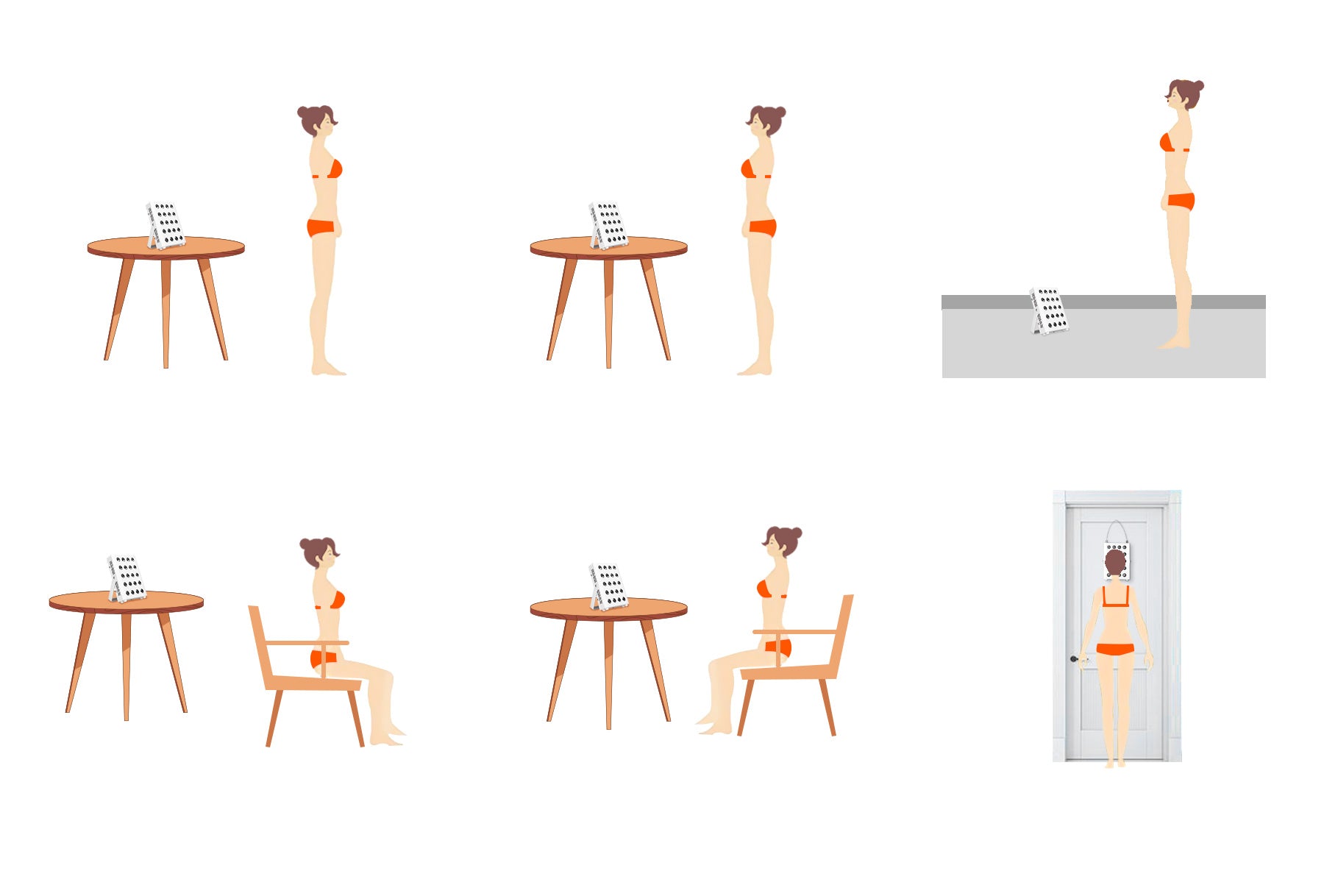
Choosing the Right Light Therapy Device
It's great news that handheld red and NIR light therapy device are becoming more easily available. But how do you know the device you buy has therapeutic benefits? That's a good question!
For maximum benefit, look out for the following:
Efficient and durable LED lights
Clinically proven red light waves between 630-680nm
Clinically proven near-infrared light waves between 800-880nm
A low electromagnetic frequency (EMF) output
Devices that fall outside the recommended wavelengths, such as 600 or 700nm, will not affect your cells.
Ready to practice red light therapy at home? Shop some of our favorite FDA-approved red light therapy devices below:
Our portable red and NIR light therapy devices offers a light-weight and convenient way to get the amazing benefits of red light. It provides powerful wavelengths of 660nm and 850nm. The power density of our light is 20mW/cm at 20-60cm.
Our red infrared therapy belts with pulse functions:
(It has been discovered that when LED lights are pulsed, body tissue can heal more rapidly. Pulse function, increase power, instant 2-3 times power output.)
Red light therapy torch for small area with high power density:
And other led light therapy panels with high power density (over 145mw/cm2 @ 0 inch)
What Should You Expect When Doing Red Light Therapy At Home?
One of the reasons why red light therapy has become so popular is because it is a quick, safe, easy, and 100 percent painless procedure that requires zero downtime. As Dr. Chwalek explains, “These are light, painless treatments that vary in length of time depending on the device at hand. You may experience a slight warming sensation on the skin, but it shouldn’t hurt or burn. The lights can be quite bright, however, so make sure you follow the instructions and protect your eyes if you’re prone to light sensitivity.”
The same goes for full-body treatments, too. “It’s completely non-invasive, so there is no pain involved,” says Vargas. “Normally, clients use my RevitaLight Bed after a facial and find it very relaxing. They strip down, lay in the bed for 20 minutes, and walk out with healthy glowing skin.”
What Results Can You Expect From Doing Red Light Therapy At Home?
One of the most important things to understand about red light therapy is that its results are cumulative. In other words, don’t expect to use an at-home treatment at night and wake up to clearer, younger-looking skin the next morning.
“If you are using LED therapy to improve acne or fine lines, you will need to use it consistently for several weeks or longer, depending on the device,” says Dr. Chwalek. “Remember, to improve fine lines and wrinkles, you will need to stimulate collagen production, which can take a few months of use. If you are using red light therapy to calm redness and inflammation, however, you may be able to see an improvement after one use.”
With his DRx SpectraLite FaceWare Pro, Dr. Gross says that users typically see a reduction of acne within a few days and a clearing of mild to moderate acne, as well as an initial decrease in lines and wrinkles, within two weeks of daily use. However, for the best results, you’ll need to use the device consistently for ten weeks, which Dr. Gross admits sounds frustrating but is actually quite the breakthrough.
“Think of it this way: collagen is a single strand of fiber, right?” he explains. “So it’s like saying how many strands of hair do you need to have the appearance of a full head of hair? Each strand grows one by one, so it takes time to accumulate enough strands to create a full head of hair. The same goes for collagen production. It takes time—in the case of our device, ten weeks—to produce a sufficient number of collagen fibers to see clinical improvements.”



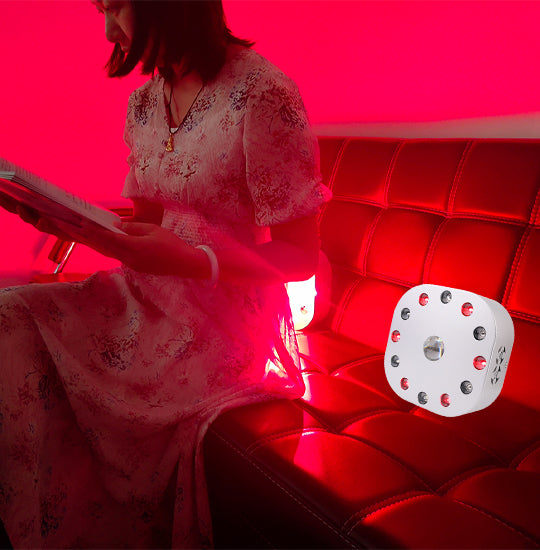
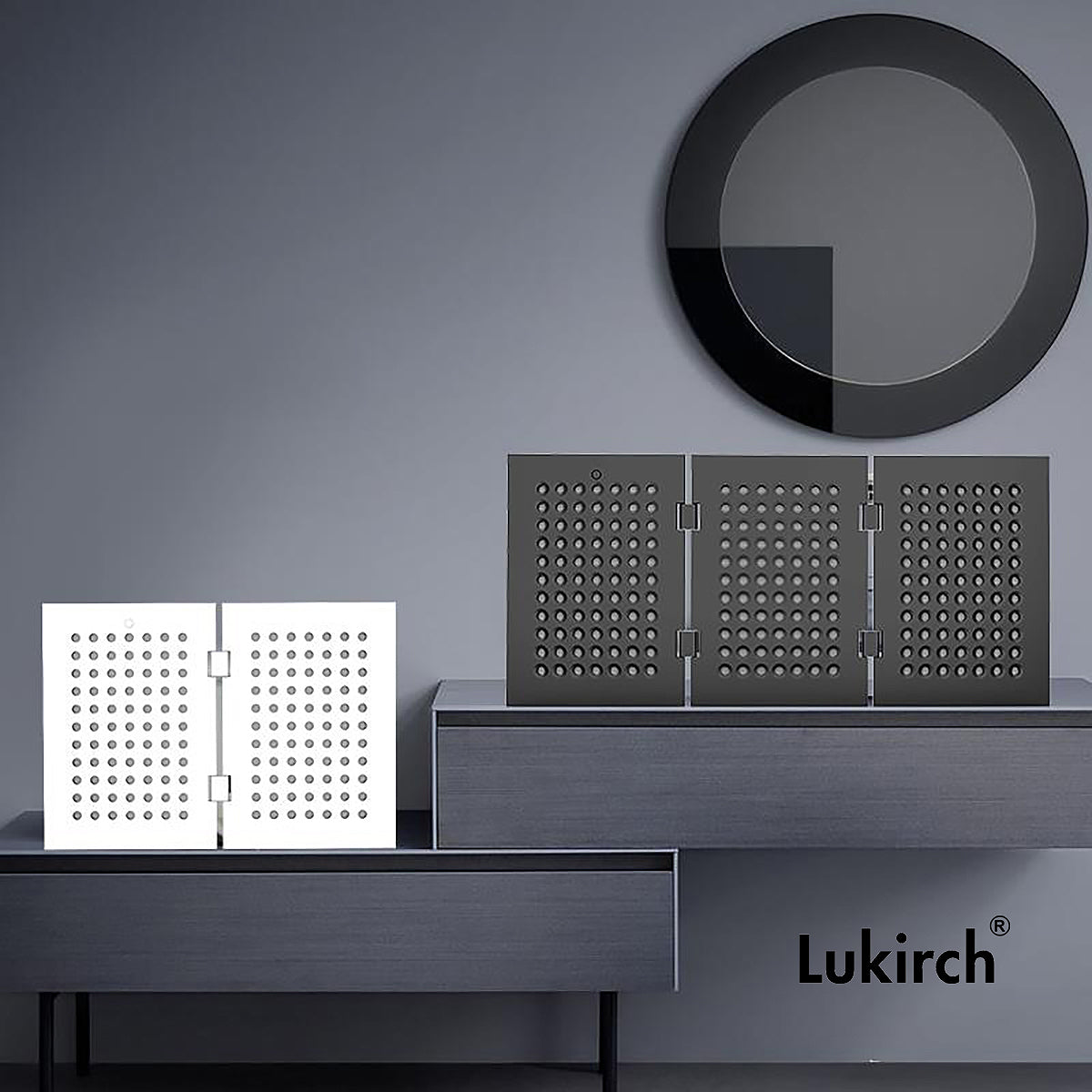
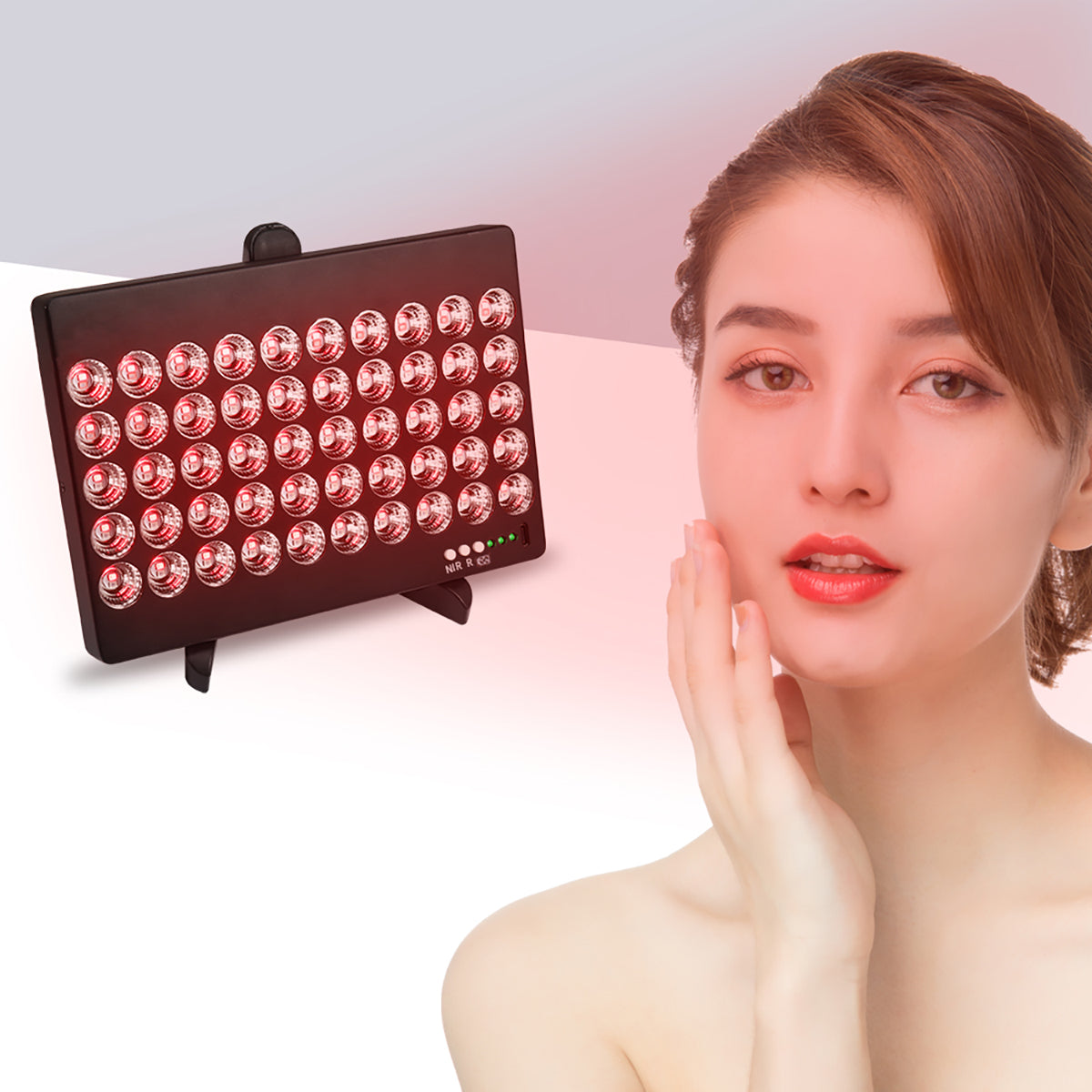
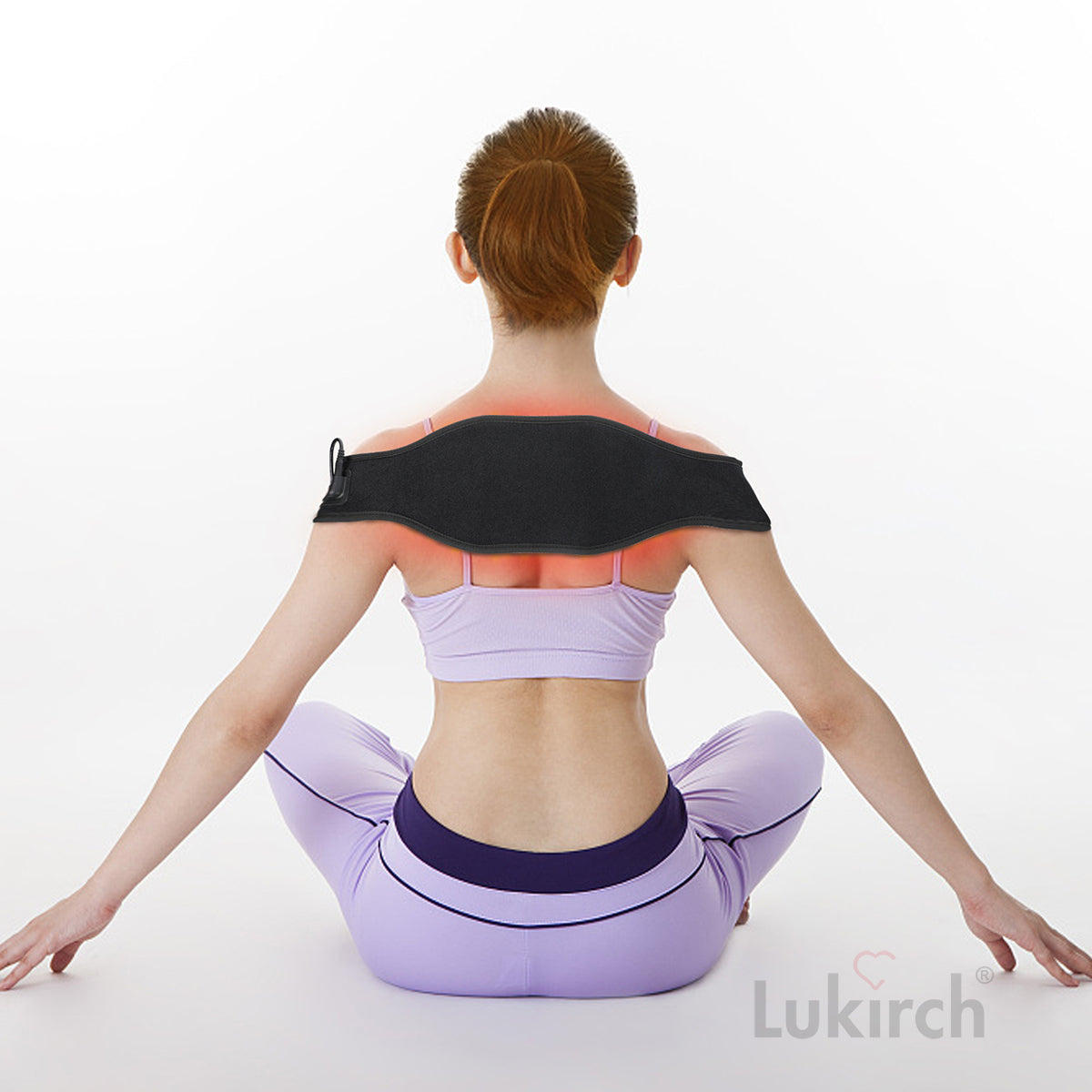
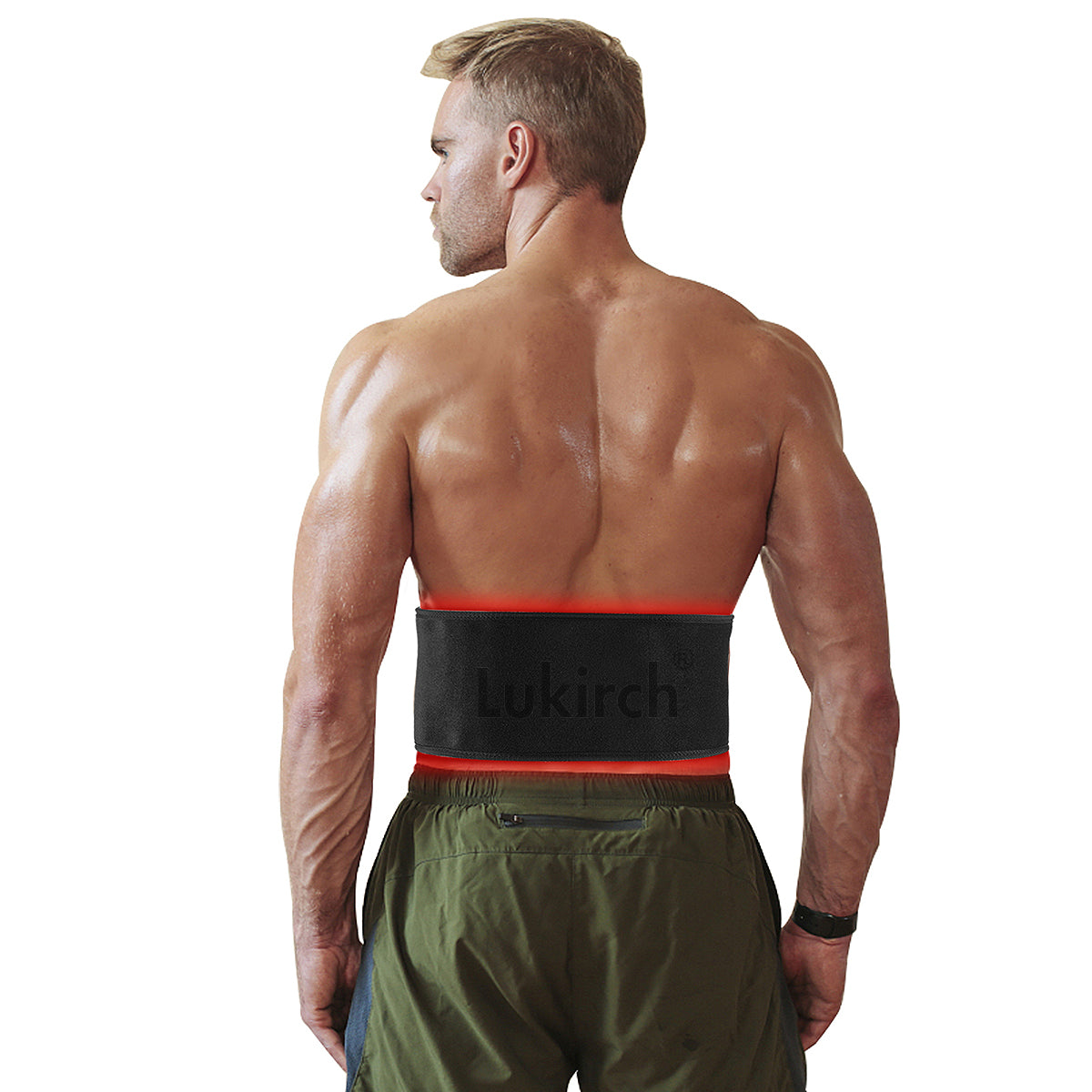
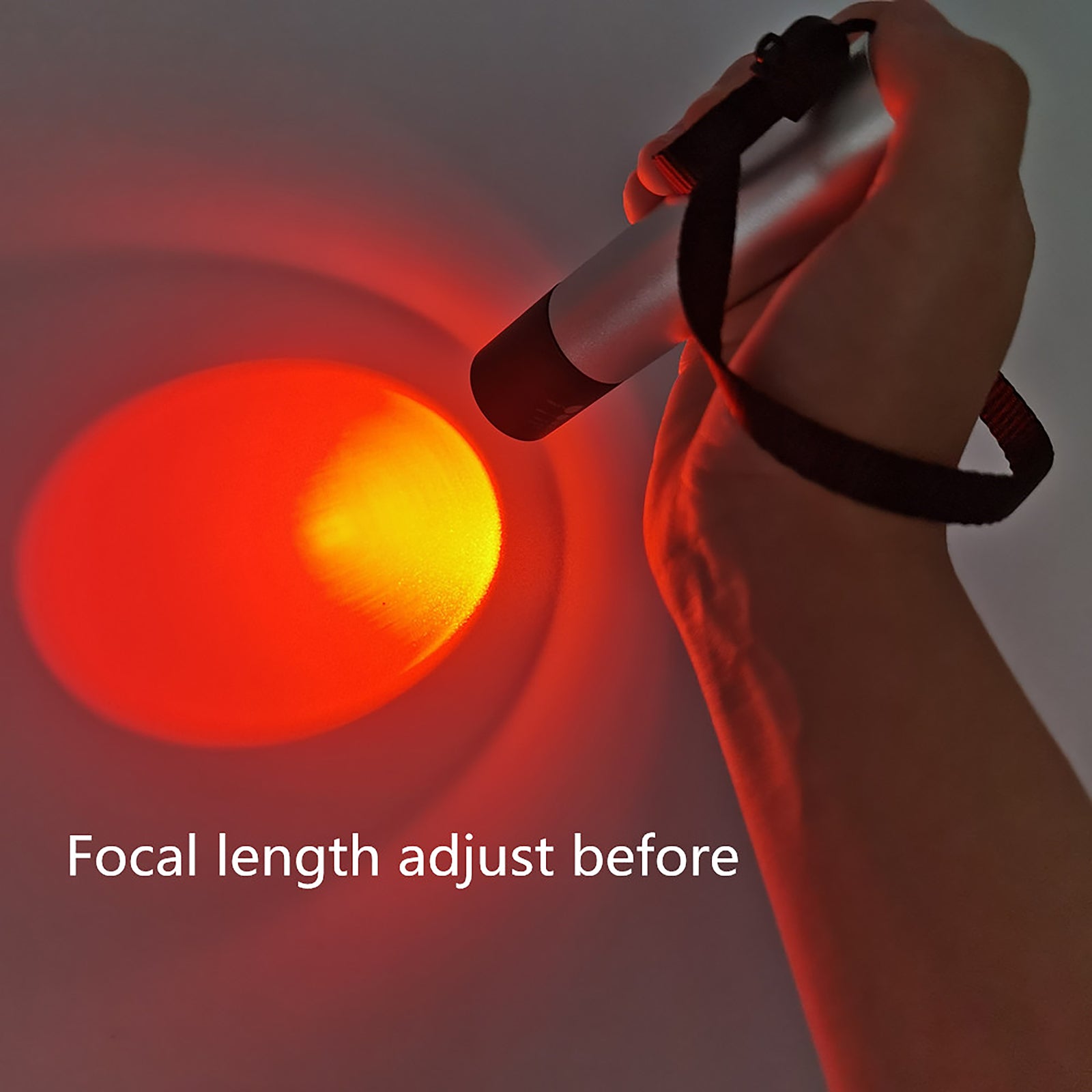
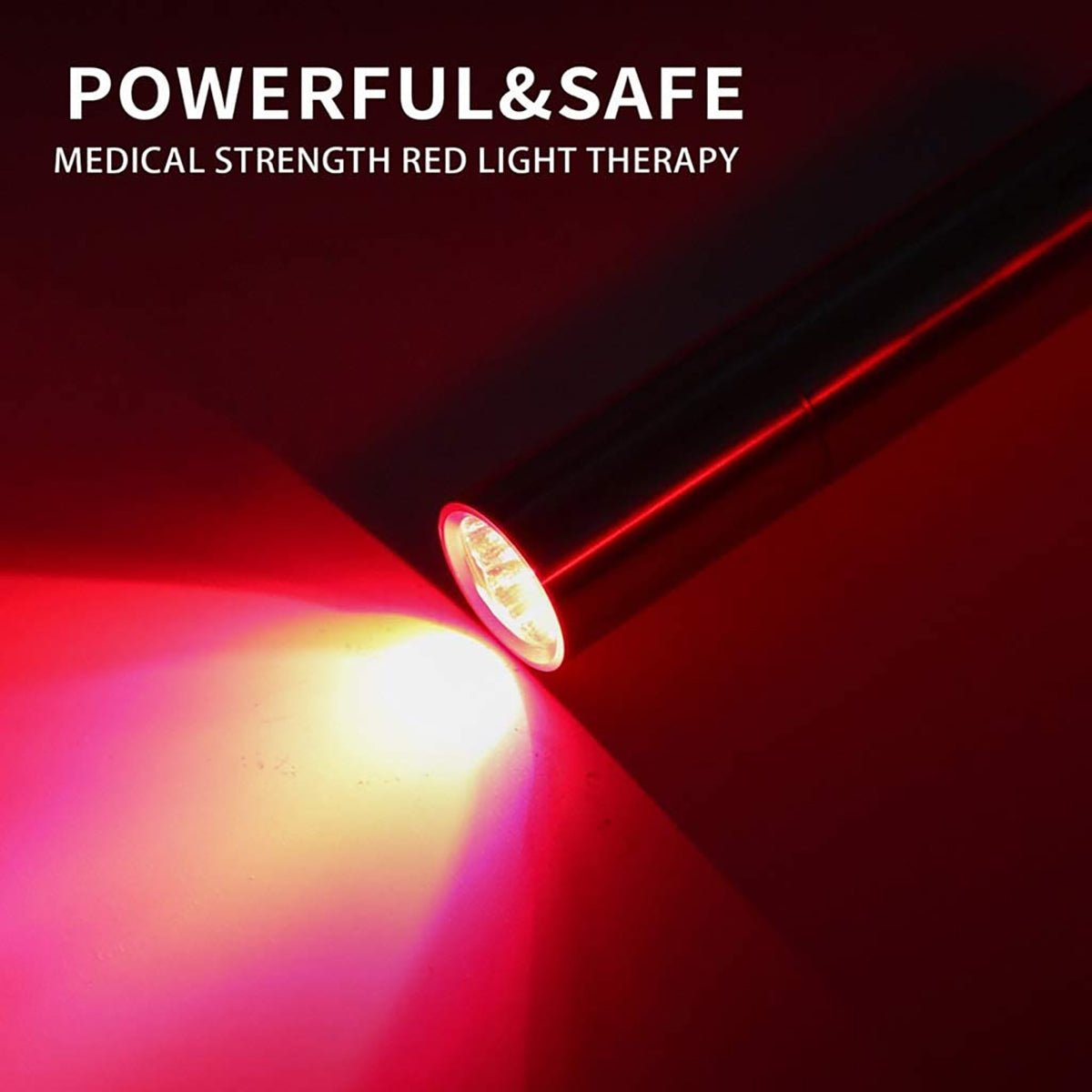
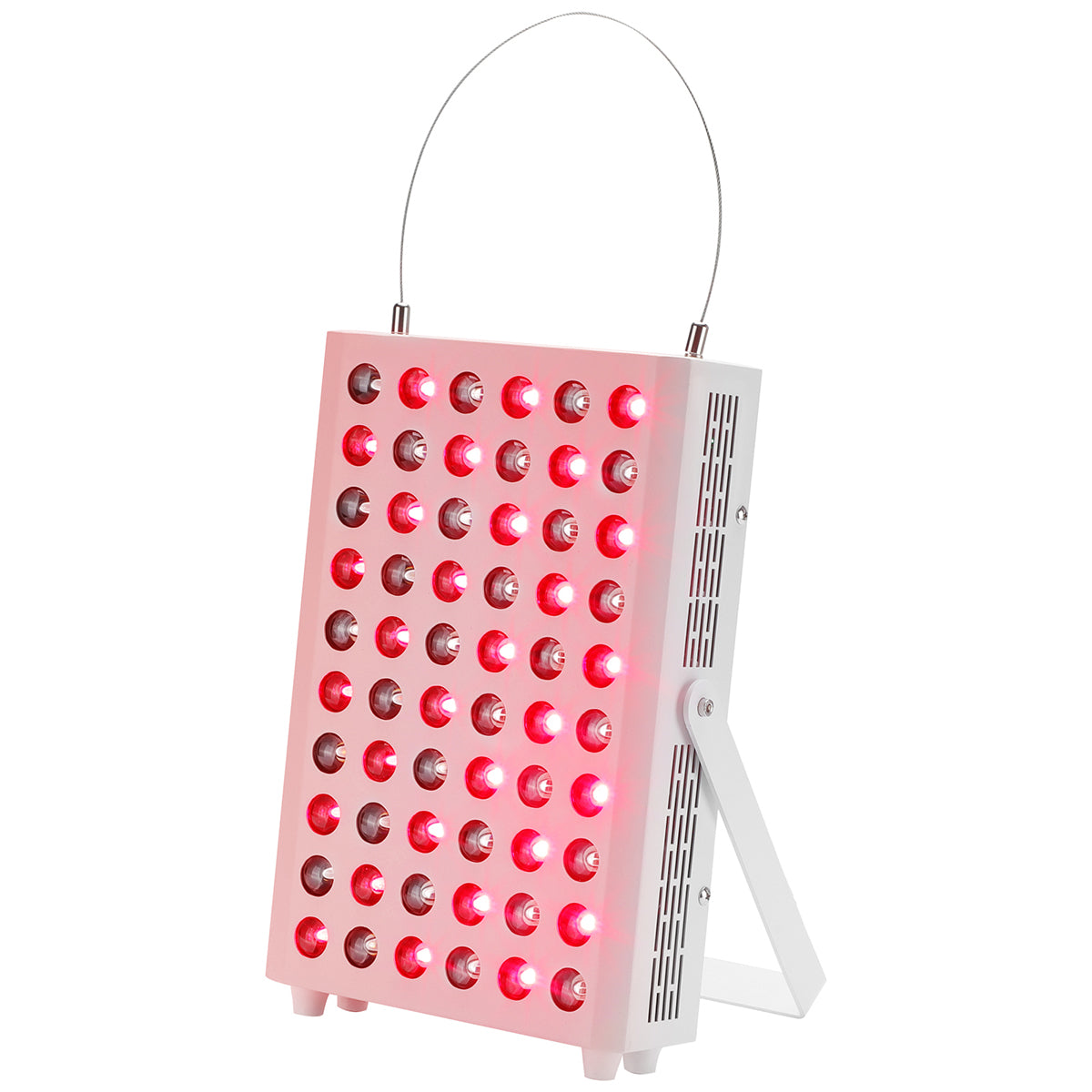
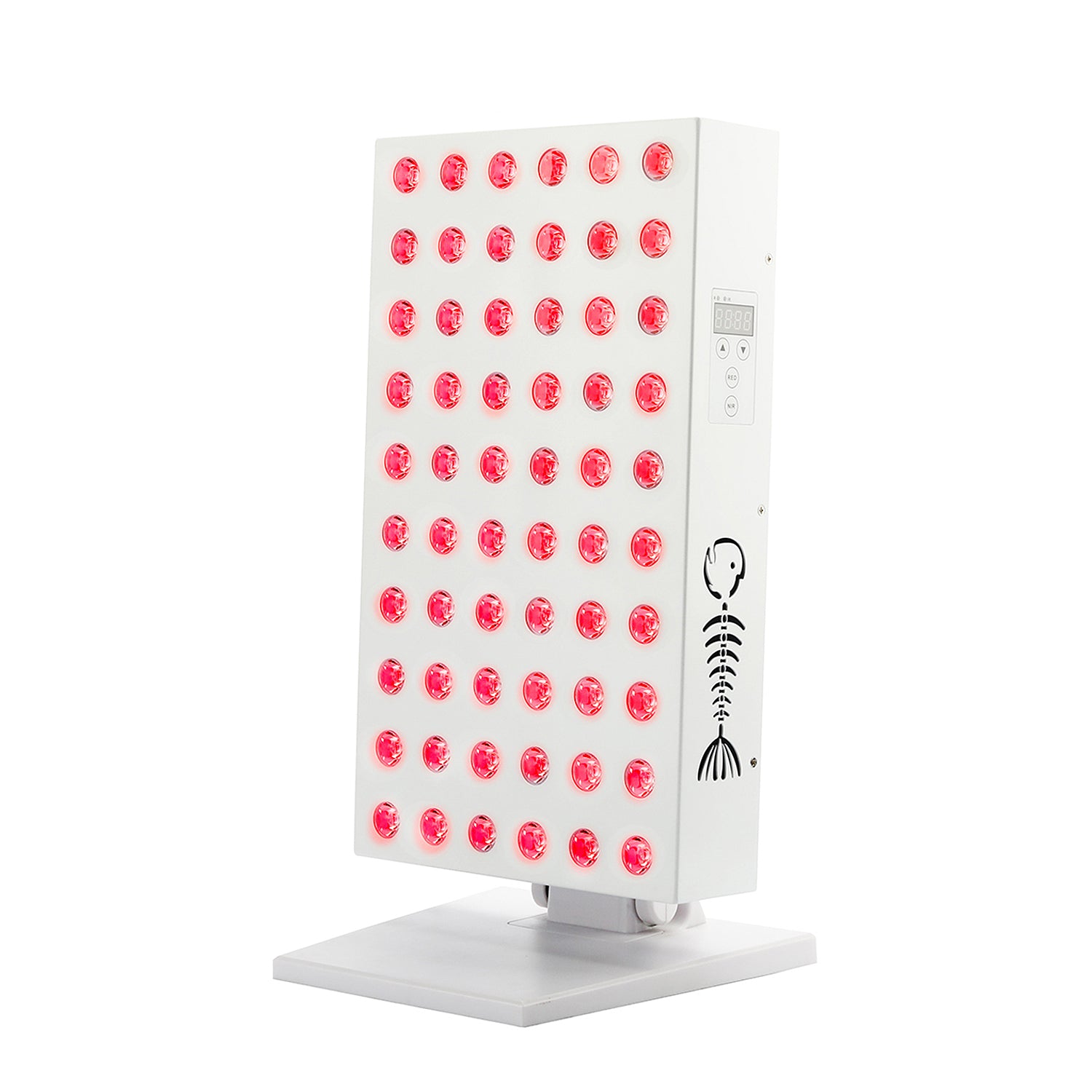
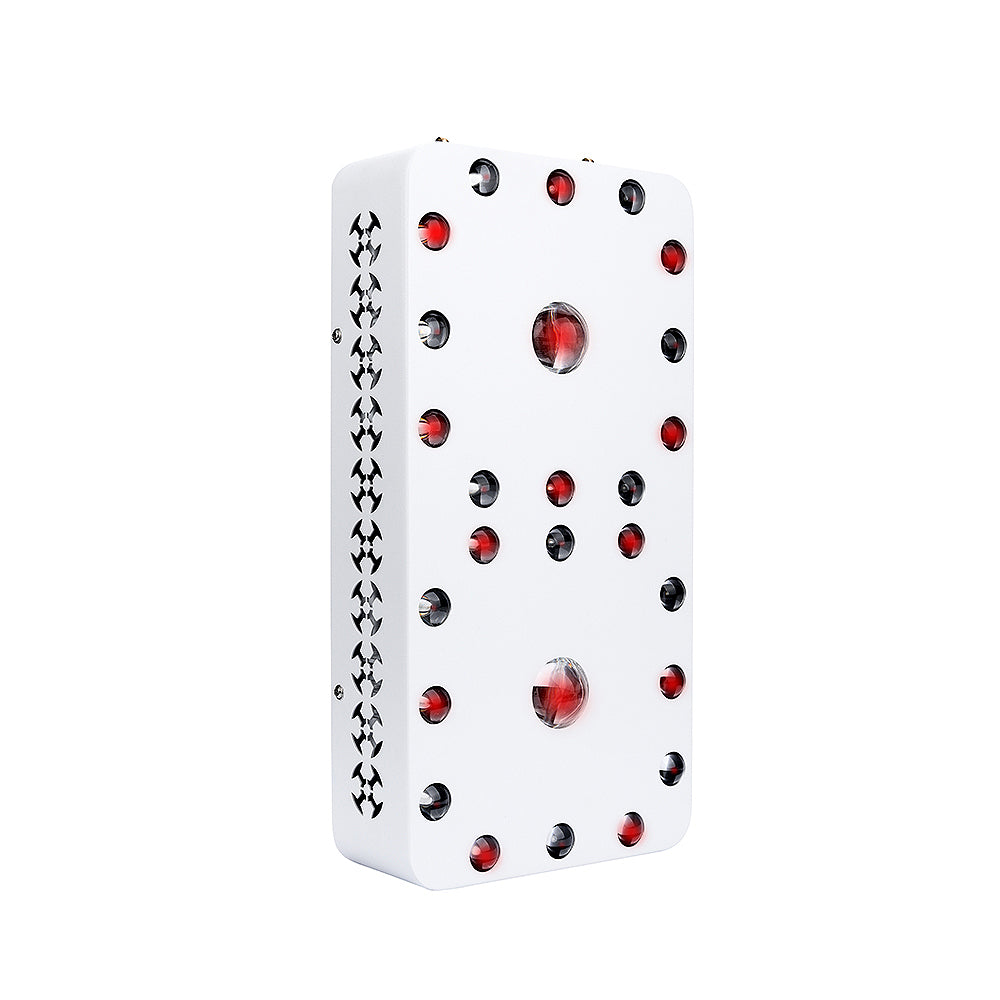
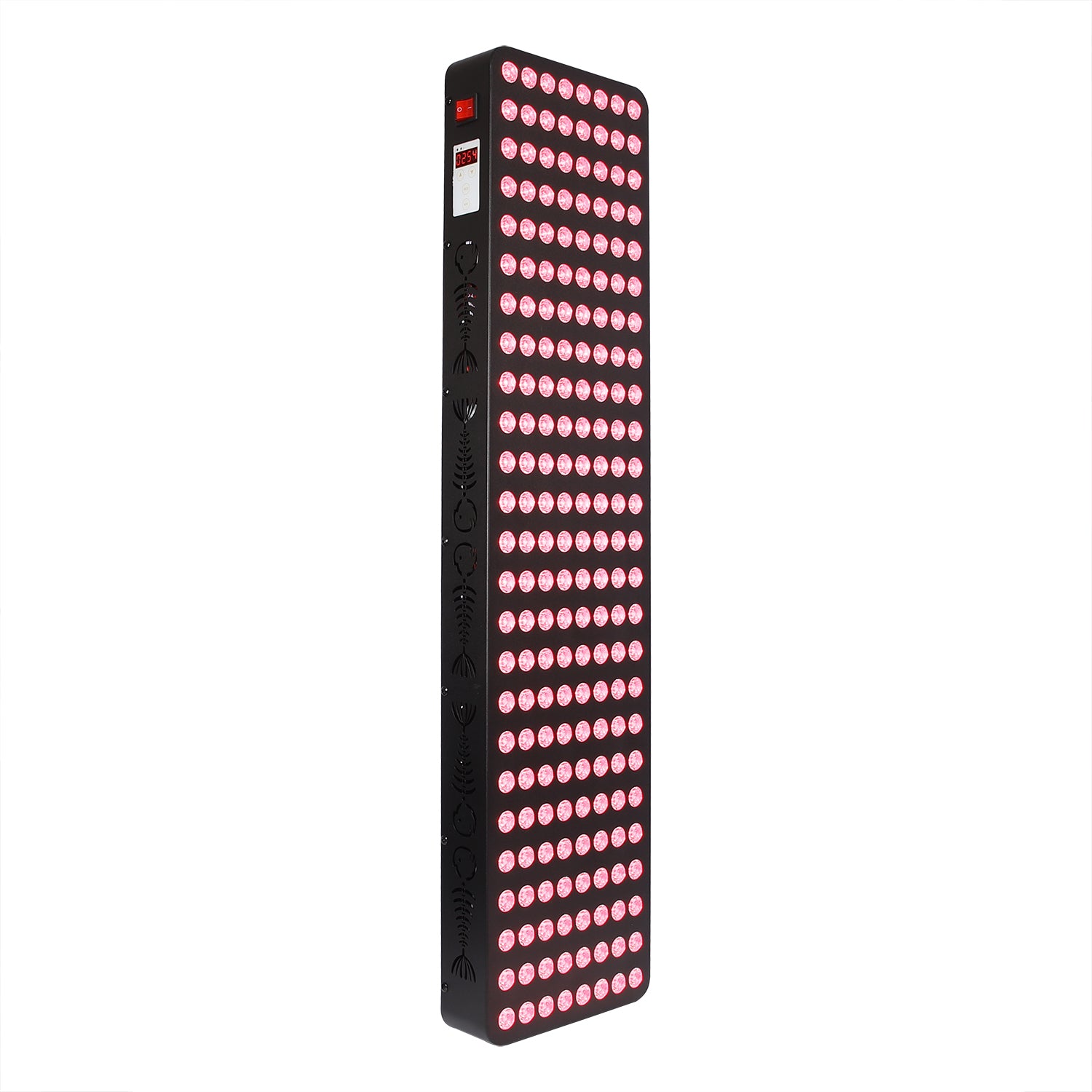
Paulette On
I enjoyed the information and it is quite useful in helping one to find an instrument that’s suitable for the issue at hand.